São Tomé and Príncipe

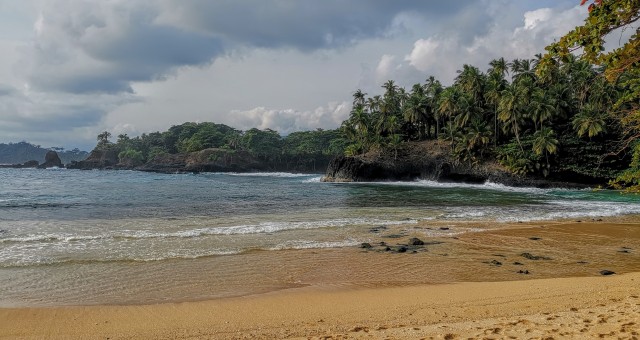 São Tomé and Prìncipe is an isolated speck in the equatorial Atlantic and Africa’s second smallest country.
São Tomé and Prìncipe is an isolated speck in the equatorial Atlantic and Africa’s second smallest country.
We flew from the island nation of Cape Verde direct to the island nation of São Tomé and Prìncipe with TAAG, the national airline of Angola. São Tomé and Prìncipe is a country made up of two equatorial tropical islands sitting in the Gulf of Guinea about 250km off the coast of Gabon.
São Tomé and Prìncipe is a country made up of two equatorial tropical islands sitting in the Gulf of Guinea about 250km off the coast of Gabon.

The equator crosses through the country and the best way to describe it is, lush, green and overcast. The adjacent island of Annabon has NEVER recorded a cloudless day of clear skies.!!
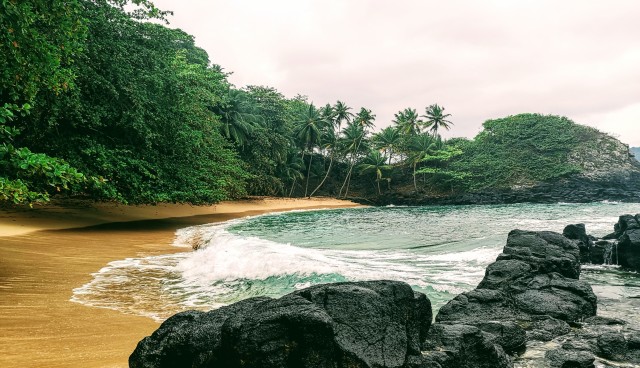 Prior to 1975 they were a colony of Portugal and since independence has been one of Africa’s most stable and democratic countries.
Prior to 1975 they were a colony of Portugal and since independence has been one of Africa’s most stable and democratic countries.
At one time the country was the World’s largest producer of Cocoa and it’s still the country’s main crop.
 The main island is made up of three distinct areas. The dry North, the lush South and the rainforest clad mountainous interior.
The main island is made up of three distinct areas. The dry North, the lush South and the rainforest clad mountainous interior.
I came to these islands for the rainforest and mountains, so we hired a car with a driver on day one and spent the day in the dry North to see it before spending the rest of the fortnight in greener surrounds.
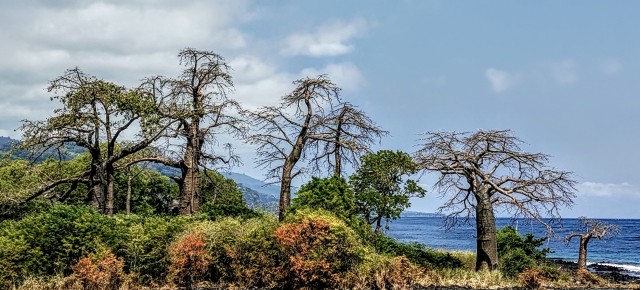
We visited Tamarindos Beach and Azul Lagoon, both nice but nothing to write home about. There was so much rubbish on the shore of the lagoon that I decided to jump off the rocks and swim in the nearby ocean instead.
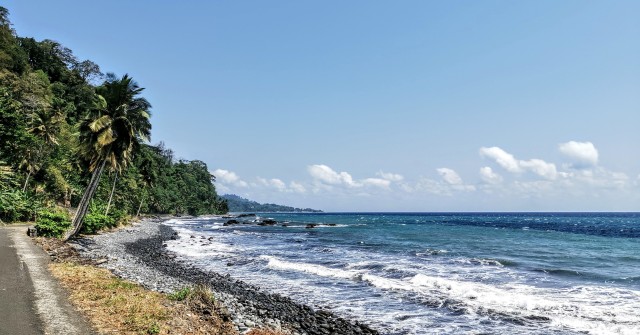
The highlight of the north coast was the Spider Crab Restaurant in Neves where we had a sensational seafood lunch.

Spider Crab
 On day two we headed south and could see why so many call these islands a tropical eco-paradise and why the whole island was named a UNESCO Bio Reserve in 2012.
On day two we headed south and could see why so many call these islands a tropical eco-paradise and why the whole island was named a UNESCO Bio Reserve in 2012.
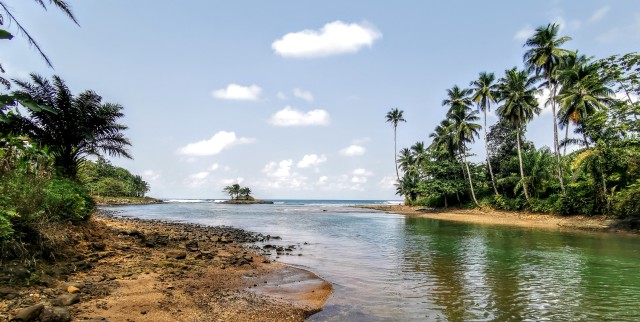
 We drove the full length of the island to the remote Jalé Beach, along the way stopping at the old abandoned hospital of Roca Agua Ize which was once part of a large cocoa plantations but today is in ruins like just about all the other colonial buildings throughout the island, which is the same scenario repeated throughout all of Africa.
We drove the full length of the island to the remote Jalé Beach, along the way stopping at the old abandoned hospital of Roca Agua Ize which was once part of a large cocoa plantations but today is in ruins like just about all the other colonial buildings throughout the island, which is the same scenario repeated throughout all of Africa.
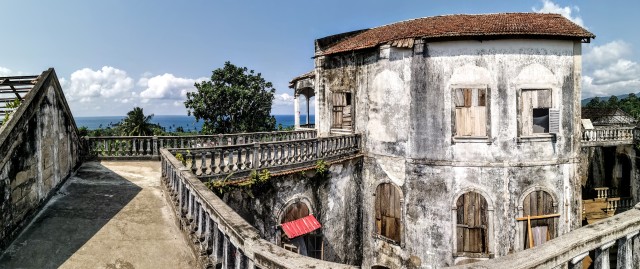
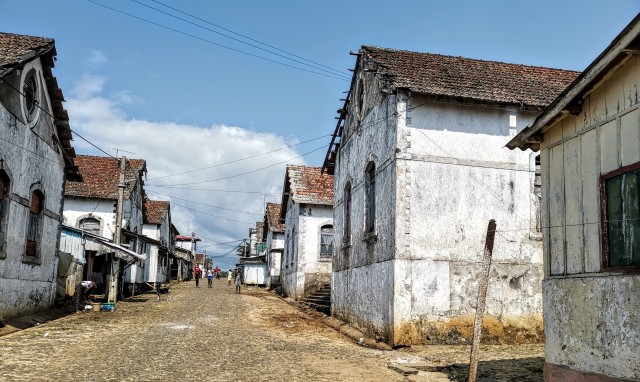 The drive along the East coast is lined with lush tropical rainforest on one side and empty beaches on the other. Small fishing villages, usually next to creeks that flow down from the mountains and into the sea, where women and children do their washing and bathe, line the coast.
The drive along the East coast is lined with lush tropical rainforest on one side and empty beaches on the other. Small fishing villages, usually next to creeks that flow down from the mountains and into the sea, where women and children do their washing and bathe, line the coast.
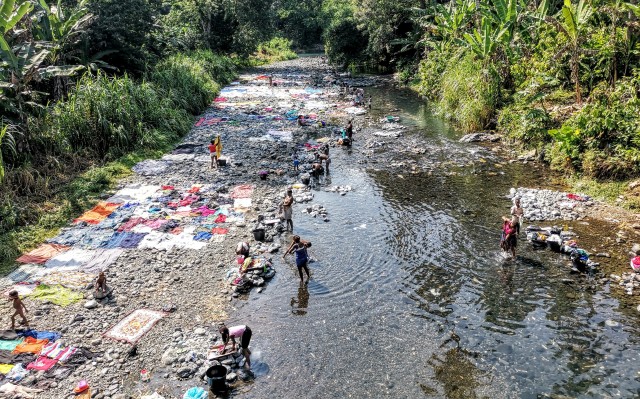
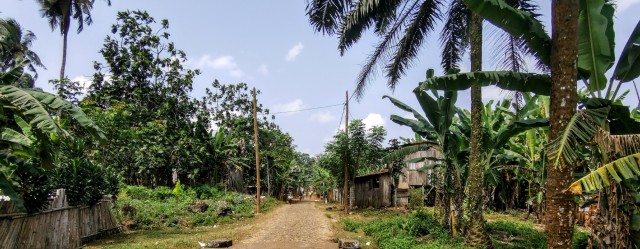 Nearing the bottom of the island we found three interesting beaches. Firstly N’guembu Beach is a copy of Dolly Beach and further down the road Cabana Beach looks just like Trannies Beach. These are two beaches that several people reading this blog will know.
Nearing the bottom of the island we found three interesting beaches. Firstly N’guembu Beach is a copy of Dolly Beach and further down the road Cabana Beach looks just like Trannies Beach. These are two beaches that several people reading this blog will know.
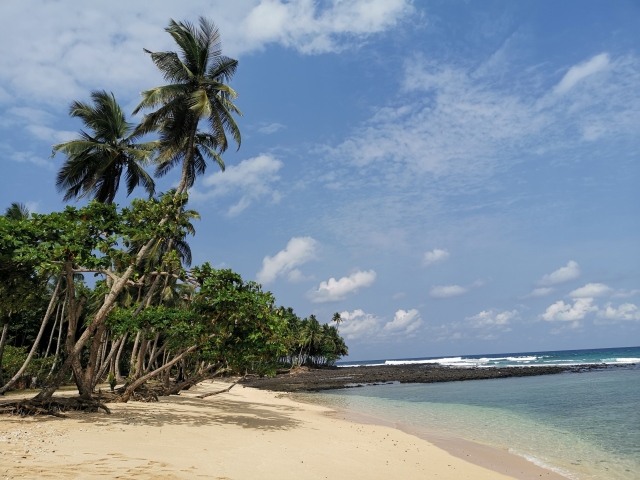
 The highlight of the day for me was finding perhaps the most incredible tropical beach I’ve ever seen, which is called Praia Piscina.
The highlight of the day for me was finding perhaps the most incredible tropical beach I’ve ever seen, which is called Praia Piscina.
 There’s no pure white sand or azure blue water like The Seychelles or Cocos-keeling, this beach is far more rugged and spectacular.
There’s no pure white sand or azure blue water like The Seychelles or Cocos-keeling, this beach is far more rugged and spectacular.

Clear emerald green water
Under tropical grey skies the rainforest extends to the beach where rugged black lava cliffs meet a warm crystal clear emerald green ocean.
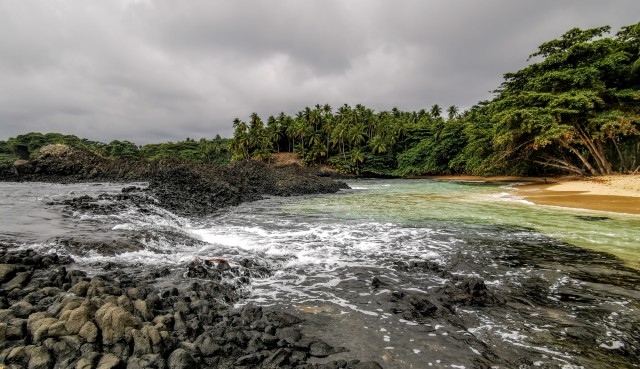 At the other end of the beach five waterfalls pour into a 7ft deep pool and at the top of the beach a local women will cook you local fish for lunch on a home made BBQ.
At the other end of the beach five waterfalls pour into a 7ft deep pool and at the top of the beach a local women will cook you local fish for lunch on a home made BBQ.
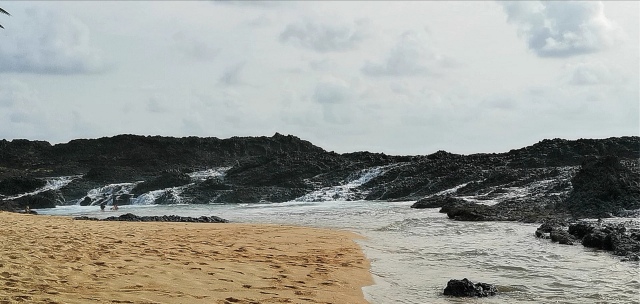
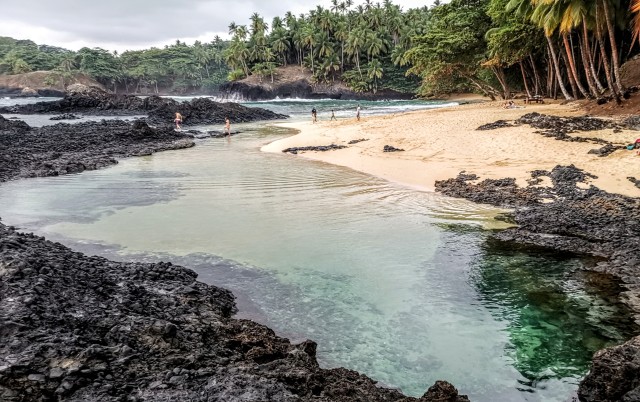 We found a resort only three kilometres away and booked in for three days.
We found a resort only three kilometres away and booked in for three days.
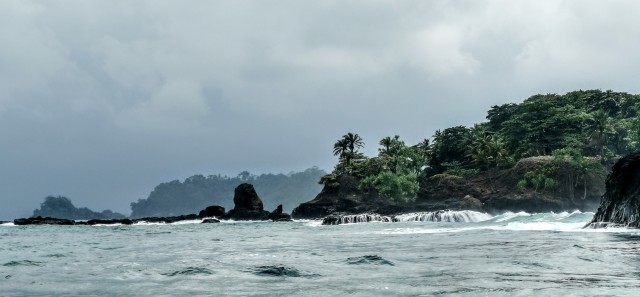 The further south you travel, the more ‘lost world’ the island becomes, with rugged jungle clad valleys and sheer volcanic peaks with their summits hidden in the clouds.
The further south you travel, the more ‘lost world’ the island becomes, with rugged jungle clad valleys and sheer volcanic peaks with their summits hidden in the clouds.
 The breathtaking 663m natural skyscraper Pico Cão Grande is near the southern end of the island and is the World’s tallest volcanic plug, sitting dramatically above a jurrasic like landscape.
The breathtaking 663m natural skyscraper Pico Cão Grande is near the southern end of the island and is the World’s tallest volcanic plug, sitting dramatically above a jurrasic like landscape.
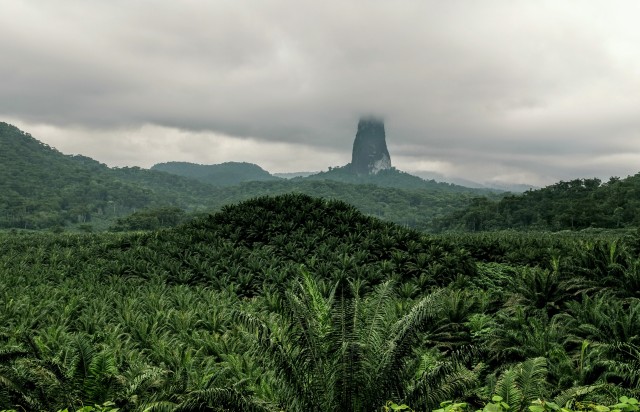
 Often shrouded in mist it has a foreboding presence over the southern interior.
Often shrouded in mist it has a foreboding presence over the southern interior.
Later on in the week I left Lynda in a beachfront lodge for two days and went climbing mountains in search of some of the island’s rarest birds which are only found near the summit of several mountains. São Tomé and Prìncipe has never been attached to Africa and has the highest number of endemic species per Km than anywhere else in the World, outdoing more famous locations such as the Galápagos.
 We camped overnight in the forest next to an abandoned colonial building and thanks to my guide Antonio, had a 100% success rate with the birds I wanted to see, which included the World’s largest Sunbird called Giant Sunbird and the World’s largest Weaver, called Giant Weaver.
We camped overnight in the forest next to an abandoned colonial building and thanks to my guide Antonio, had a 100% success rate with the birds I wanted to see, which included the World’s largest Sunbird called Giant Sunbird and the World’s largest Weaver, called Giant Weaver.
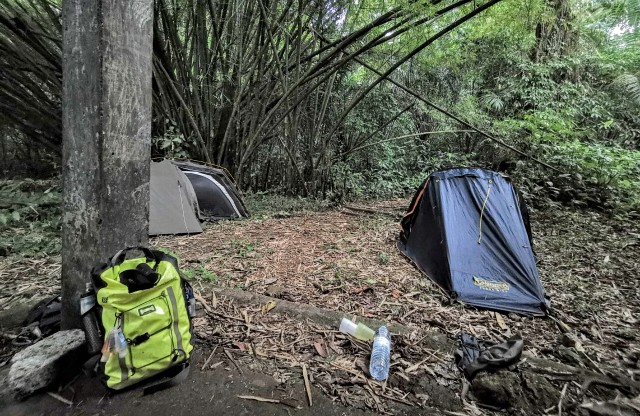 We spent the next three days at Miongo Lodge on the edge of São João dos Angalares. The lodge sits on the side of a lagoon opposite the ocean and we spent lots of time watching local village life go by.
We spent the next three days at Miongo Lodge on the edge of São João dos Angalares. The lodge sits on the side of a lagoon opposite the ocean and we spent lots of time watching local village life go by.

Lodge amongst the boulders
From there we headed into the city to pick up our Gabon visas and then into the mountainous interior.
In the mountains the temperature was cooler but the hikes were harder. We did an 11km walk to a nearby waterfall and both had sore legs afterwards. It was uphill to the falls and all downhill on the way home. The older I get the more I dislike long downhills.

After two weeks on São Tomé it was time to depart for Gabon. We unfortunately never got to Prìncipe but will have to return for that one day.
After two weeks in the C. A. R and three weeks in Cape Verde, as well as two weeks here, the next country Gabon is only going to be a relatively short eight day visit. After Gabon, it’ll be back to longer stays with three weeks on Mauritius.
Bye for now.

Sounds like a great place,
can’t wait see those rare birds you seen.
Biggles
LikeLike
I just signed up to your blog RSS. Will you post more on this topic?
LikeLike
Hopefully I’ll get back there soon and spend some time on Principè. But not this year.
LikeLike